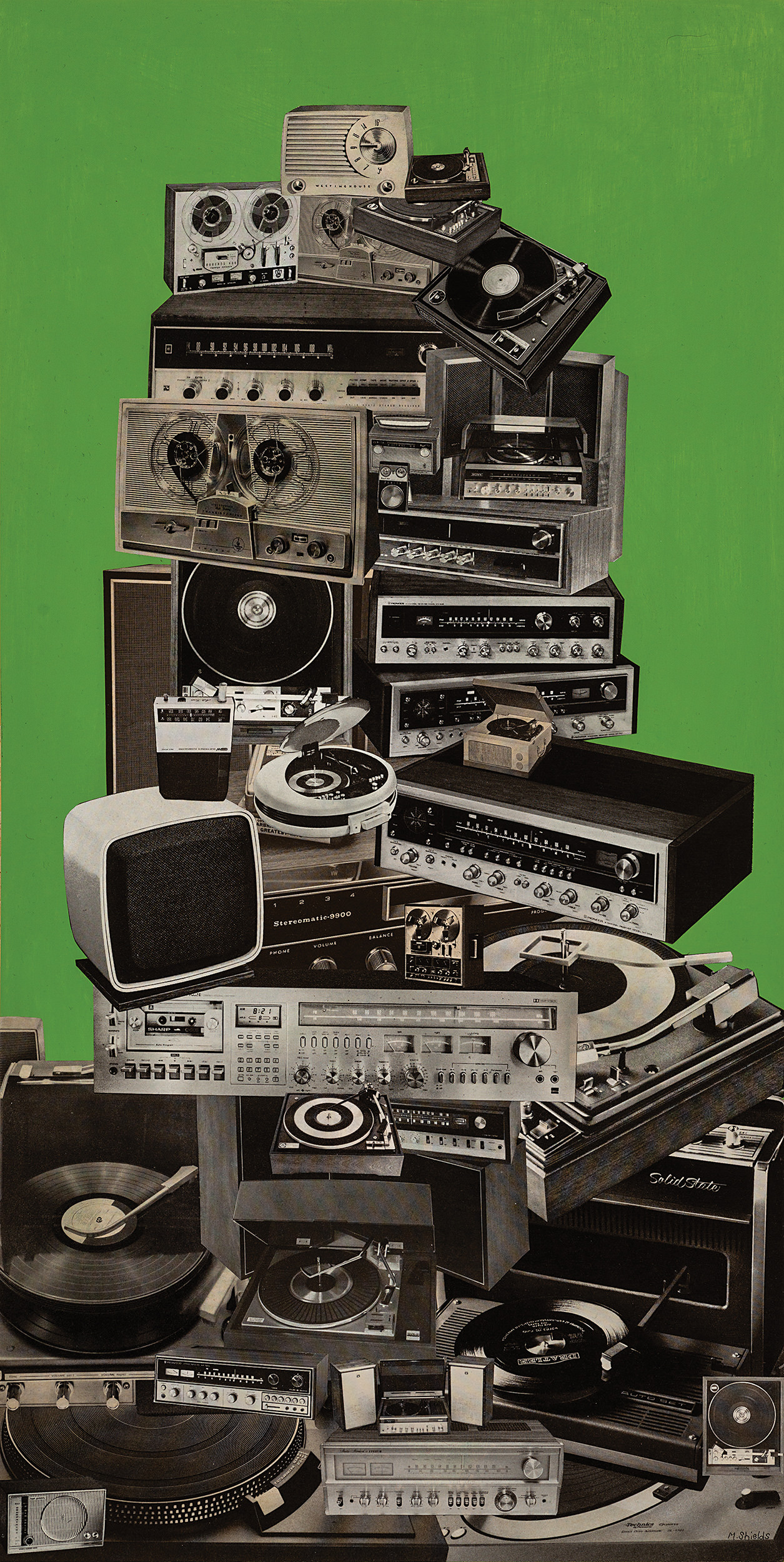Around 40 years ago I went to Radio Shack and purchased an integrated circuit (IC) chip that was packaged with a technical data sheet explaining how to wire it up as a delay unit. This was the Reticon SAD-1024 bucket-brigade delay (BBD) IC. I hooked up all the needed components on a circuit board, mounted it in a wooden box (!), and it became my first echo unit; one I would use for years on my weird-ass home-recorded electronic music (see the Craniostomy Vol. One release as "Lawrence Crane" on Bandcamp). The frequency bandwidth was very low, and the tech sheet recommended filtering the audio signal at half the clock frequency and to also low-pass the output to remove clocking "glitches." I never filtered out the output on my box, and I found that the clock itself was audible – I'd hear a high frequency sine wave change with my delay time! Radio Shack went on to manufacture the Realistic 32-1110 Electronic Reverb built around this IC, which I always scoffed at as I knew it was really a delay!
But that's not even what Bucketverb is modeled after – it's something cooler. The Panasonic MN3011 was a similar BBD chip, but with six output taps at increasingly longer delays instead of the single output tap like my BBD IC. The A/DA STD-1 rack-mount delay used this chip (check out the wild UAD plug-in version!), as did the DOD FX45 Stereo Reverb stompbox (using two MN3011s). With the MN3011 generating multiple outputs, this IC could more closely simulate room diffusion, the core of real acoustical reverb.
Leigh Marble's reFuse Software released their initial Cheeseverb plug-in in 2019, modeled after the characteristics of the Panasonic MN3011. Now known as Bucketverb, the reverb has added way more features. The Time section's Size fader gives more or less delay time, plus a Short or Long Decay switch for varying regeneration times. An LFO with Rate and Depth controls allows one to modulate the delay time with Tri(angle) or Ran(dom) waveforms. This can get super wonky sci-fi cool real fast, or used as a subtle effect. The Stereo section's Width control adds in a stereo spread, tapping left and right into different times of the cascading delays, and a toggle switch offers Hard (delay taps hard-panned left/right), Pan ("Panimation"; an extra, slow left/right motion), and Ens (Ensemble; simulating two BBD chips with cross-modulated delay times, like a Roland Dimension D SDD-320). The Mix fader should be obvious, but the 160 Hz HPF is interesting, as it "applies a high-pass filter to the recirculated delay signals only. Helpful to avoid low frequency buildup, especially with longer reverb times and the Long Decay setting." Very smart and useful. Presets are also included, something the previous Cheeseverb did not offer, and these can be good demos of what this delay can do or perfect jumping off points.
The Bucketverb reverb is unique, and certainly would not be the only reverb-style plug-in one would choose to own, but it has its own special character and uses. Probably my favorite use, one that I gravitated to right away, was on electric bass guitar. I was working on a record for the Portland trio Candace, and many of their songs feature melodic bass lines during certain sections. Bucketverb gave the bass a special "lift," with its murky tone (reverb output is low-pass filtered around 4 kHz) and ringing delay/reverb artifacts. Where I had usually applied several passes of EQ (pre and post) and compression in order to tailor other reverb plug-ins for desired bass ambience, Bucketverb automatically sits in the proper place for me, and makes the bass lines pop out as well. On drums I kept thinking I was King Tubby's assistant – pure lo-fi dub goodness. On vocals, especially for backing parts, this weird reverb can be pretty special. Small amounts of actual delay, as opposed to reverb, can sound so unique yet not take over the mix or stereo field. And, of course, lead guitars can benefit from the not-quite-a-spring reverb sound! Keep in mind that this delay can also be used to completely modify sounds. I found myself experimenting (at minimum delay time) by using the Bucketverb's built-in tone and modulation to massively warp instruments in a mix (render, re-import, and nudge back in time).
The Bucketverb plug-in was an instant hit at my studio and in my mixes. It's super easy to implement, its murky, unique tone keeps it out of the way yet sounds interesting. Plus it's affordable!




_disp_horizontal_bw.jpg)